Starlings can be a significant nuisance for homeowners and property managers. These noisy, social birds often gather in large flocks, causing damage with their droppings, competing with native birds, and creating excessive noise. This comprehensive guide provides effective and humane methods how to get rid of starlings on your property without harming these protected birds. Additionally, understanding the habits and behaviors of starlings can help in implementing prevention strategies that deter them from settling on your property. Homeowners may also find benefit in incorporating humane woodpecker control methods, as these approaches can effectively manage the broader pest bird population while preserving the delicate balance of local ecosystems. By using a combination of these techniques, you can reduce the impact of starlings while fostering a welcoming environment for native wildlife.
Quick Picks: Best Starling Deterrents

Most Effective

Physical Barrier
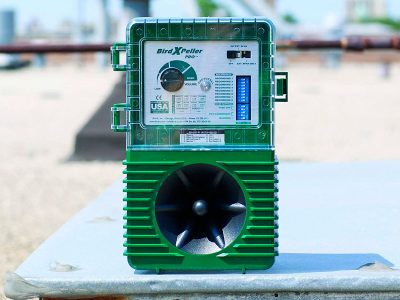
Audio Deterrent
Understanding Starlings: Identification and Behavior
European starlings (Sturnus vulgaris) are an invasive species in North America, introduced in the 1890s. These medium-sized birds are often confused with blackbirds but can be distinguished by their shorter tails, iridescent plumage with white speckles, and triangular wings in flight.
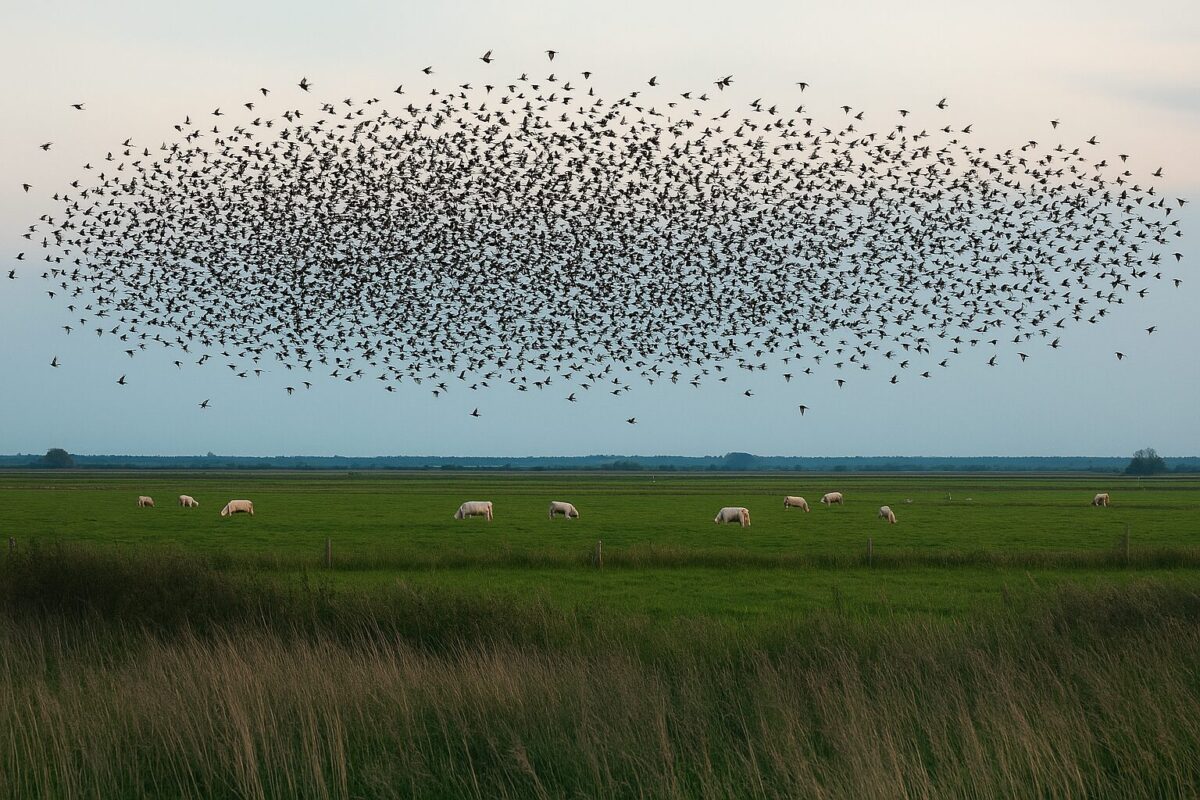
Appearance
Starlings have dark, speckled plumage with an iridescent purplish-green sheen. During breeding season, their bills turn yellow; in winter, they turn dark. Adults are 7-9 inches long with a wingspan of 12-16 inches.
Distribution
Originally from Europe, starlings now inhabit most of North America, preferring urban and suburban areas. They’re absent only from the driest deserts and densest forests.
Habitat
Starlings prefer areas with scattered trees, including parks, gardens, farmland, and cities. They often roost on buildings, in trees, and in other man-made structures that provide shelter.
Starlings are highly adaptable birds that form large, noisy flocks, especially during fall and winter. They’re excellent mimics, capable of imitating other birds, animals, and even mechanical sounds. One of their most remarkable abilities is their murmuration—a spectacular aerial display where thousands of birds fly in coordinated patterns.
Common Problems Caused by Starlings
Despite their interesting behaviors, starlings can cause significant problems for property owners and farmers:
- Crop Damage – Starlings consume large quantities of seeds, fruits, and grains, causing substantial agricultural losses.
- Building Contamination – Their droppings accumulate quickly, damaging building materials and creating unsanitary conditions that require expensive cleanup.
- Disease Transmission – Starlings can carry and spread over 25 diseases to both humans and livestock, including E. coli, salmonella, and histoplasmosis.
- Excessive Noise – Large flocks create significant noise disturbances, especially at dawn and dusk.
- Competition with Native Birds – As an invasive species, starlings aggressively compete with native cavity-nesting birds for nesting sites.
While European starlings are not protected under the Migratory Bird Treaty Act in the United States (unlike most native birds), humane control methods are still recommended and often required by local regulations. Always check your local laws before implementing control measures.
3-Step Strategy How to Get Rid of Starlings
Controlling starlings effectively requires a multi-faceted approach. The following three-step strategy addresses all aspects of starling management: eliminating attractants, blocking access to nesting areas, and actively deterring birds from your property.
STEP 1: Eliminate Food and Water Sources
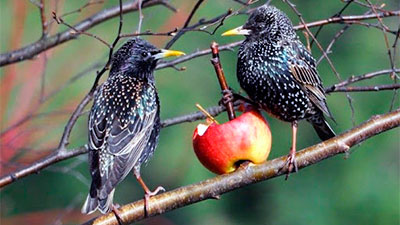
The most fundamental step in starling control is removing what attracts them to your property in the first place. Starlings are opportunistic feeders that will take advantage of any available food source.
Tips for Eliminating Food Sources:
- Use bird feeders designed to exclude larger birds like starlings
- Clean up fallen fruit from trees promptly
- Secure garbage bins with tight-fitting lids
- Feed pets indoors or remove uneaten pet food immediately
- Cover compost piles to prevent access
- Eliminate standing water sources or bird baths
If you enjoy feeding other birds, consider switching to foods that starlings don’t prefer, such as nyjer seed, safflower seed, or suet feeders designed specifically for smaller birds. Starlings have a harder time feeding from tube feeders with short perches or weight-activated feeders that close when heavier birds land on them.
STEP 2: Restrict Nesting and Roosting
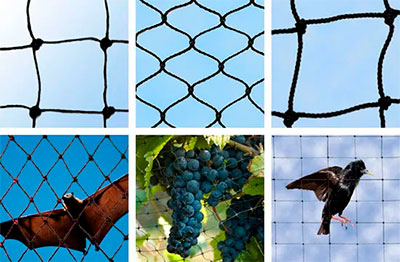
Starlings are cavity nesters that readily use holes in buildings, vents, and other structures. Blocking access to potential nesting sites is crucial for long-term starling control.
Physical Barriers: Bird Netting
Bird netting creates an effective physical barrier that prevents starlings from accessing protected areas. It’s one of the most reliable methods for excluding starlings from specific locations.
Bird Barrier StealthNet
Professional GradeHow Does It Work
How to Use
- Can be installed horizontally to protect areas from above
- Can be installed vertically to enclose structures or trees
- Secure with cable ties, hog rings, or net clips
- Available in different colors to blend with surroundings
- Can be cut and shaped to fit any area
- 100% effective physical barrier when properly installed
- Long-lasting and weather-resistant
- Nearly invisible from a distance
- Works for all bird species, not just starlings
- Low maintenance once installed
- Higher initial installation effort
- May require professional installation for large areas
- Requires periodic inspection for tears or holes
- More visible than some other deterrent methods
Electronic Deterrents: Bird-Shock Systems
For ledges, railings, roof peaks, and other surfaces where starlings frequently perch, electrified track systems provide an effective deterrent solution that trains birds to avoid protected areas.
Bird Barrier Bird-Shock Flex-Track
Most EffectiveHow Does It Work
How to Use
- Install on ledges, parapets, signs, railings, and other perching areas
- Connect to a standard outlet with a charger (sold separately)
- Available in different colors to match building exteriors
- Can be bent to follow curves and corners
- Single charger can power up to 500 feet of track
- Extremely effective for starlings and other birds
- Low profile and virtually invisible from below
- Weather-resistant and durable
- Humane solution that doesn't harm birds
- Low maintenance once installed
- Higher initial cost than some other deterrents
- Requires power source (outlet or solar)
- Professional installation recommended
- May require cleaning depending on environmental conditions
Chemical Deterrents: Repellent Gels
Bird repellent gels create an uncomfortable surface that discourages starlings from landing or roosting. These products are especially useful for smaller areas where other physical deterrents might be impractical.
Bird-X Bird Proof Repellent Gel
Easy Application
How Does It Work
How to Use
- Apply to clean, dry surfaces using a standard caulking gun
- Place parallel beads of gel about 2 inches apart on horizontal surfaces
- For optimal coverage, use 10-12 feet of gel per linear foot of surface
- Apply to ledges, signs, parapets, pipes and beams
- Can be easily removed with soap and water when no longer needed
- Made from natural, food-grade ingredients
- Nearly invisible once applied
- Easy to apply with standard caulking gun
- Effective for up to 6 months outdoors
- Works in various weather conditions
- Requires reapplication every 6 months
- May collect dust and debris over time
- Not practical for large surface areas
- Can be challenging to apply in hard-to-reach areas
STEP 3: Active Deterrents to Scare Starlings Away
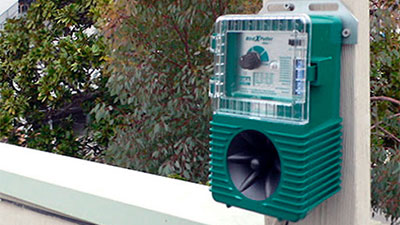
Once you’ve eliminated attractants and blocked access to nesting sites, active deterrents can help drive away remaining starlings and prevent new birds from establishing themselves on your property.
Audio Deterrents
Sonic devices that emit predator calls and distress signals can be highly effective at deterring starlings, especially when combined with other control methods.
BirdXPeller PRO Electronic Bird Repeller
Audio DeterrentHow Does It Work
How to Use
- Mount the unit 10-15 feet above the ground facing the problem area
- Set to 'starling mode' (Version 1) for targeted control
- Adjust volume based on the size of the area you want to protect
- Program operating times to activate at dawn and dusk when birds are most active
- Move the unit periodically to prevent habituation
- Covers large areas (up to 1 acre)
- Weather-resistant design for outdoor use
- Species-specific programming for targeted control
- Adjustable volume and frequency settings
- Can be used with solar power for remote locations
- Birds may habituate to sounds over time if not varied
- Effectiveness may decrease in urban areas with ambient noise
- Sound may be audible to humans at higher volumes
- Requires power source (batteries, AC adapter, or solar panel)
Visual Deterrents
Visual scare tactics work best when combined with other methods and frequently moved to prevent birds from becoming habituated to them.
| Visual Deterrent | How It Works | Best Placement |
|---|---|---|
| Predator Decoys (Hawks/Owls) | Triggers starlings’ natural fear of predators | Roof peaks, tree branches, fence posts; move every few days |
| Scare Eye Balloons | Mimics predator eyes and creates movement in wind | Garden areas, fruit trees, open spaces; hang where they can move freely |
| Reflective Flash Tape | Creates disorienting light patterns and noise as it moves | Garden perimeters, fruit trees, building edges; replace when deteriorated |
Frequently Asked Questions
Are starlings protected by law?
European starlings are not protected under the Federal Migratory Bird Treaty Act in the United States because they are an introduced, non-native species. However, local regulations may still restrict certain control methods, and humane approaches are always recommended.
Before implementing lethal control measures, check with your local wildlife agency for any applicable regulations or permit requirements.
Will starlings damage my home?
Yes, starlings can cause significant damage to homes and buildings. Their acidic droppings can corrode building materials, their nesting materials can clog vents and gutters creating fire hazards, and they may peck at wood, insulation, and sealants.
The accumulation of nesting materials and droppings also creates unsanitary conditions that may lead to health concerns.
How do I keep starlings out of my garden?
To protect gardens from starlings, use bird netting over fruit trees and berry bushes, install visual deterrents like flash tape or scare balloons, apply repellent sprays to plants (following label instructions), and consider sonic devices that emit predator calls.
Harvesting fruits and vegetables promptly as they ripen also reduces attraction for starlings.
How effective are fake predators at deterring starlings?
Fake predators like owl or hawk decoys have limited long-term effectiveness against starlings when used alone. Starlings quickly become habituated to stationary decoys that don’t move or change position.
For better results, use decoys with moving parts, regularly relocate them around your property, and combine them with other deterrent methods.
Can I prevent starlings from using my bird feeders?
Yes, you can discourage starlings from feeders by using feeders designed specifically to exclude larger birds. Options include weight-sensitive feeders that close under a starling’s weight, tube feeders with short perches, or caged feeders that allow small birds in while keeping starlings out.
Additionally, avoiding certain foods like cracked corn, millet, and bread scraps can make your feeding station less attractive to starlings.
How long does it take to get rid of starlings?
Starling control is often an ongoing process rather than a one-time solution. For established populations, it may take several weeks of consistent effort to see significant results. The timeline depends on the size of the flock, how long they’ve been established, and how consistently control methods are applied.
Integrated approaches using multiple methods simultaneously typically yield faster results than single-method approaches.
Integrated Management: The Key to Long-term Success
Successfully managing starling problems requires an integrated approach that addresses all aspects of bird behavior and habitat. Single-method approaches rarely provide long-term relief, as starlings are intelligent and adaptable birds.
The most effective starling control programs combine multiple techniques in a coordinated strategy:
- Habitat Modification – Eliminate food, water, and nesting opportunities
- Exclusion – Use physical barriers to prevent access to buildings and structures
- Deterrents – Deploy audio and visual devices to create an unwelcoming environment
- Persistence – Continue control efforts until starlings establish new patterns
- Monitoring – Regularly inspect your property for new activity and adapt strategies as needed
Remember that starling control is most effective when implemented early, before birds establish strong attachments to your property. Early intervention requires less effort and typically yields faster results.
Begin starling control efforts at the first sign of activity, ideally before breeding season (February to June in most regions). Once starlings have established nests with eggs or young, control becomes more challenging and options may be limited.
Conclusion: Reclaiming Your Space from Starlings
Starling problems can be frustrating, but with persistence and the right approach, you can effectively manage these invasive birds and protect your property from damage. By implementing the three-step strategy outlined in this guide—eliminating attractants, blocking access to nesting areas, and using active deterrents—you can create an environment that starlings find unwelcoming.
For maximum effectiveness, combine multiple methods into an integrated approach that addresses all aspects of starling behavior. Remember that consistency is key; starlings are intelligent and adaptable, so maintaining your control efforts over time will yield the best results.
With proper planning and implementation of these proven techniques, you can successfully reclaim your property from these persistent birds while using humane and environmentally responsible methods.

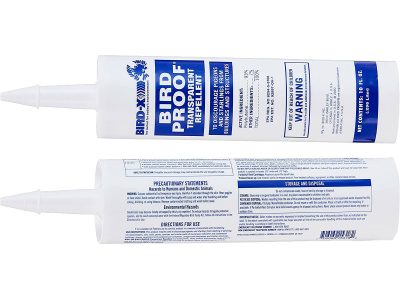

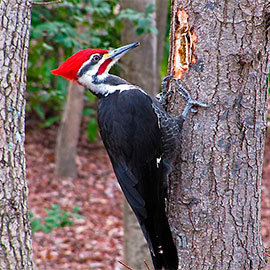
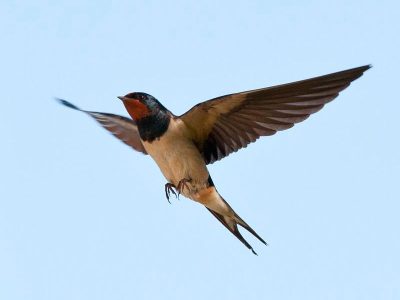

Because my is rented, i think to hire a wildlife professional to a fairly thorough job to an extensive invasion of birds that have been inside soffits, etc with many nests…Expensive ( $ 1800.00 ) , but peace of mind…What do you advise?